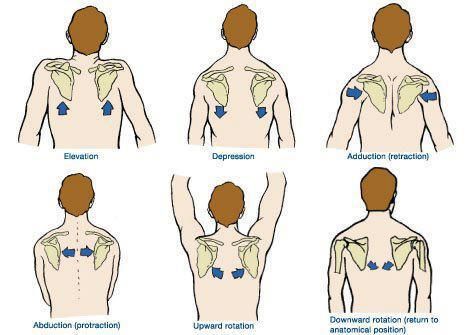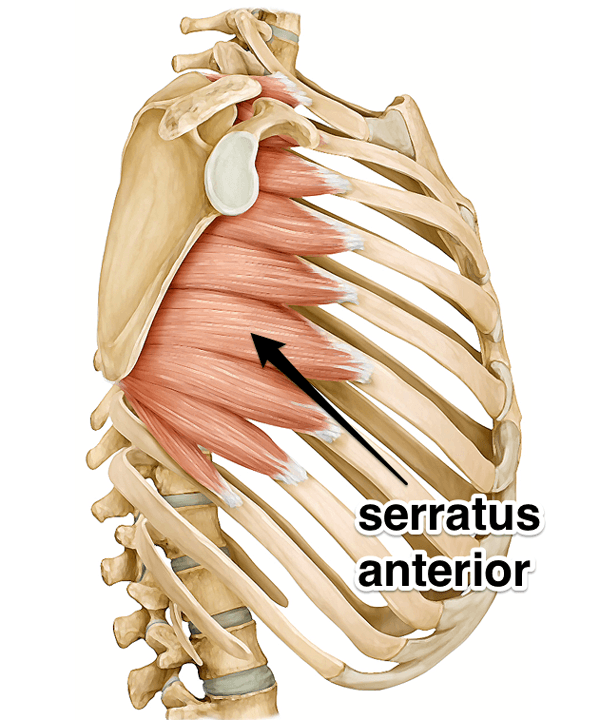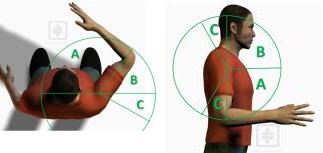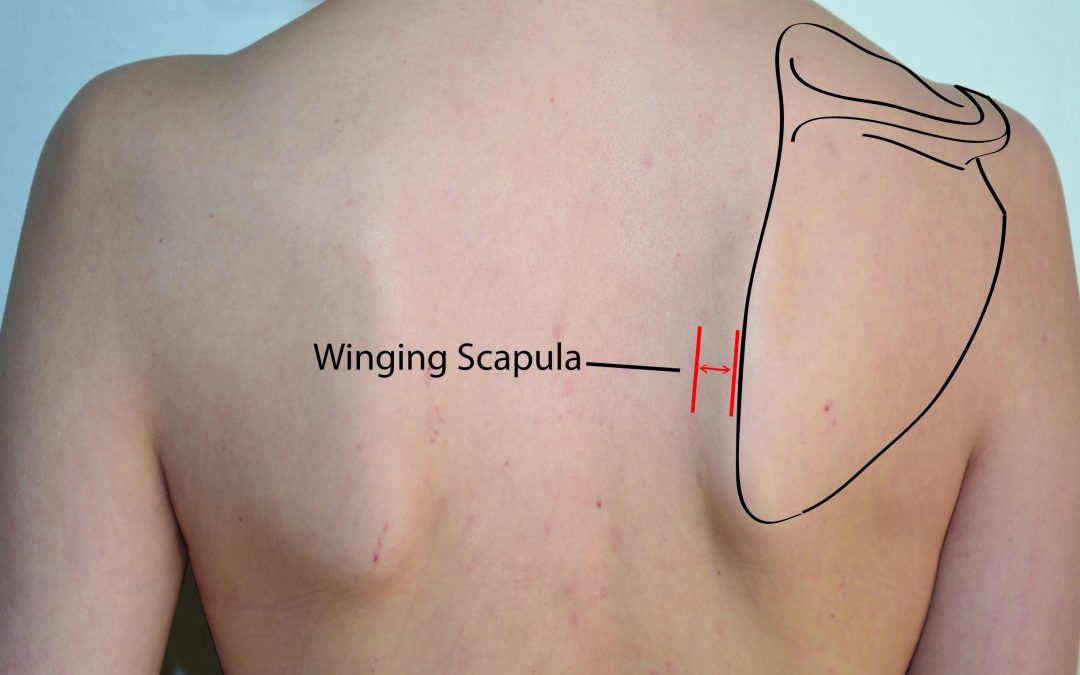Have you ever seen someone doing a press/push-up and one or both of their shoulder blades (scapula) move towards the middle of the back? Or maybe you’ve felt the skin of your back get pinched as you lower yourself in a press/push-up.
Perhaps you have constant poor posture at work and you’re searching for exercises to get your spine back right. You’d be surprised just how many people suffer from muscle imbalance in the upper back/around the scapula.
What is winged scapula?
Winged scapula is a condition in which the inner part of the scapula flares out of the back and can be due to a variety of reasons. It can cause pain, discomfort and impede the range of motion for the entire upper body.
The scapula or shoulder blade is the largest bone of the shoulder complex and has many muscles attached to it. These muscles both stabilise the arm to the body and allow it to move around.
Our shoulders allow us to perform movements like no other joint in our body as you can see in the image below.

Shoulder Blade movements
If any of the muscles around the shoulder joint aren’t working in the right way at the right time, the balance is broken and with time the performance decreases and pain can occur.
A winged scapula is not an injury but a symptom of another condition; usually, a dysfunctional serratus anterior. This may be caused by a traumatic injury, pressure lesions or inflammation of the long thoracic nerve. Another possible cause may be brachial neuritis. The muscles around the scapula are controlled by the nerves arising from the brachial plexus, a neuropathy affecting the nerves that carry signals between the central nervous system and the chest, shoulder, arm and hand. It may affect the muscles of the shoulder in particular and lead to winging of the scapula.
Some bodybuilders use a controversial technique when doing exercises like bench presses and pull the shoulder blades towards each other to target the chest muscles with more force. This way they eliminate the serratus anterior function of scapular protraction, which might serve a purpose in bodybuilding, but if you’re lifting for function, it’s counterproductive because it teaches the nervous system unnatural muscular sequencing.

Serratus Anterior muscle
Treatment
As pointed out, the most important muscle to strengthen is the serratus anterior muscle which holds the shoulder blade in place and prevents it from sticking out.
A full rehabilitation and strengthening program consists of a comprehensive spectrum of exercises for the whole shoulder girdle (scapula and clavicle), as well as the glenohumeral joint (scapula and humerus).
Exercises to strengthen the serratus anterior muscle are similar to a punching type of movement, but you should focus on using mainly this muscle and not the pectoralis or deltoid group.
Also, if you’ve had surgery in the past, be sure to only perform the exercises within your safe zone – the space in which it’s safe to move, preventing too much stress on surgical repair or injury. Ask your surgeon what area is safe for you as he will have tested the strength of the surgical repair at the end of the operation to determine the ‘safe zones’, or have a look at your surgical record.

Shoulder movement zones
Zone B is the next safest. You should be careful when moving in this zone without guidance and supervision.
Zone C is the least safe and should be avoided. Your shoulder is most vulnerable to stressing a repair or an injury when your elbow is in this zone.
Exercises
Below are some of the exercises I was using with my clients since 2016 and are purely informative. Always consult your therapist before starting any strengthening programme.
Serratus press
Start in a lying position with a weight in one of your hands, holding it perpendicular to the floor. Push the weight up using your chest and arm muscles, keeping your elbow straight. Use your free hand to check if your chest muscles are still relaxed. Lower the shoulder back down and repeat.
Scapula protraction
Start with the end of the band around your shoulder like a backpack strap. Push the shoulder forward without engaging the chest muscles, the movements should be controlled mainly by the serratus anterior. Ensure you push through the entire shoulder, trying to reach as far forward as possible. Perform this exercise with the hand at different heights.
Prevention
Don’t wait to develop a condition before starting to work on weak muscles. I very often notice that even the strongest guys at the gym have poor scapular stability and struggle to keep the shoulder blade in place when doing bench presses or push-ups.
An easy way to fix this is by performing scapular push-ups – in a plank position, round the upper back and further extend your arms through the shoulders, then slowly come back to neutral.
Conclusion
Having winged scapulas when doing Press-ups or Planks is linked with weakness in the upper back (scapular area) while holding the handstand position.
Fixing this issue during Press-ups will lead to improving the handstand hold as well.

